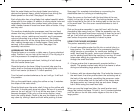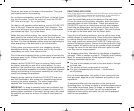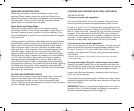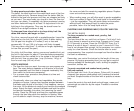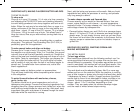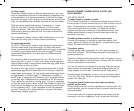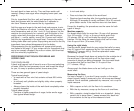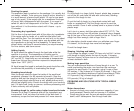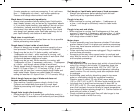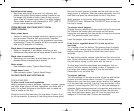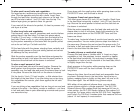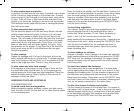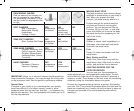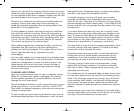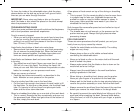
12
Proofing the yeast
The expiration date is marked on the package. It is usually, but
not always, reliable. To be sure your yeast is active, dissolve it
in a small amount of warm liquid (about 1/3 cup for one pack-
age of dry yeast). If the recipe calls for a sweetener like sugar
or honey, add a tablespoonful with the yeast. If no sugar is
called for, add a half teaspoonful of the flour. The yeast won’t
foam without it. Let the mixture stand until it foams – up to
10 minutes.
Processing dry ingredients
Put the flour in the work bowl with all the other dry ingredients.
If the recipe calls for herbs, oil or solid fats like butter, add
them with the flour. Turn the machine on and let it run for about
20 seconds. Cheese, nuts and raisins may be added with the
dry ingredients or during the final kneading. To leave them
almost whole, add them 5 seconds before you stop kneading.
For finer texture, add them sooner.
Adding liquids
All liquid should be added through the feed tube while the
machine is running. The temperature of liquids used to
dissolve and activate yeast must be between 105° and 120°F
(40° and 49°C). Yeast cells are not activated at temperatures
lower than this and they die when exposed to temperatures
higher than 130°F (54°C).
All liquid except that used to activate the yeast should be cold,
to minimize the possibility of overheating the dough.
Kneading bread dough
After the dough starts to clean the inside of the work bowl
completely, process it for 80 seconds to knead it. Stop the
machine and test the dough to be sure it’s properly kneaded.
Typical bread dough should have a soft, pliable texture and it
should feel slightly sticky. Stretch the dough with your hands to
test. If it feels hard, lumpy or uneven, continue processing until
it feels uniformly soft and pliable.
Kneading dough for coffee cakes, batter bread and brioche
Process for at least 30 seconds after all the ingredients are
incorporated. It will not clean the inside of the work bowl. If
necessary, scrape the bowl and process for 5 more seconds.
Rising
Put the dough in a large, lightly floured, plastic bag, squeeze
out all the air, and close the end with a wire twist, allowing
space for the dough to rise.
Or put the ball of dough in a large bowl coated with soft
butter or vegetable oil. Roll the dough around to coat the
entire surface. Cover it with a damp towel or a piece of oiled
plastic wrap.
Let it rise in a warm, draft-free place about 80°F (27°C). The
rising time will vary from 45 minutes to several hours, depend-
ing on the type of flour and the humidity of the air. To test if the
dough has risen enough, stick a finger into it.
An indentation should remain when you withdraw your finger.
If it doesn’t, let the dough rise more and test again.
Punch the dough down.
Shaping, finishing and baking
If you shape the dough in pans, fill them only half full. Let rise
until dough is slightly above the top of the pan. If shaping
free-form loaves, let them rise on an oiled baking sheet until
at least doubled in bulk.
Making large quantities
You can make several batches of bread dough in a row. To
avoid overheating the motor, use less than the maximum
capacity for each batch. For example, using 9 cups of flour
(45 ounces, 1.3kg) instead of 10 cups (50 ounces, 1.4kg), you
can make 5 successive batches of typical bread dough. That’s
4-1/2 pounds (2 kg) of bread dough per batch – a total of
22
1
⁄2 pounds (10 kg) of dough!
PROBLEMS AND SOLUTIONS WITH TYPICAL BREAD
DOUGH
Motor slows down:
•
Amount of dough may exceed maximum capacity of your
food processor.
Remove half and process in 2 batches.
•
Dough may be too wet. As soon as machine starts to slow
down, add 2 tablespoons flour through feed tube.



